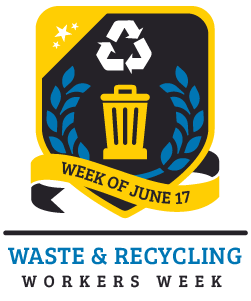Keep Recycling: Corrugated Cardboard
Getting packages delivered at home was already a growing trend before 2020. When the pandemic began, home deliveries surged, as did the demand for one particular resource: cardboard.
With both individuals and companies stocking up on necessary household goods, cardboard demand skyrocketed. While recycling has always been a crucial element of carboard production, it is more important than ever to keep up with the demand and save trees!
In the past year, the amount of cardboard recycled through Salt Lake City’s residential collection program has grown by 8%!
Put another way, of the 780 tons of material that Salt Lake City collects per month, 273 tons is corrugated cardboard.
Breaking Down the Facts about Corrugated Cardboard:
Corrugated cardboard is a lightweight and sturdy way to ship products. Corrugated boxes became popular in the early 1900s, and we’ve been using them ever since. Because corrugated carboard is so readily recyclable, corrugated boxes have become the largest recycled paper and paperboard product in the U.S..
Over 90% of American products are packaged with corrugated cardboard. But making sure to properly recycle it is the tricky part! Keep these details in mind when you’re recycling this excellent resource:
- Is It Clean? If you’re recycling a cardboard box that was used for food packaging (i.e. a pizza box), remember that food grease contaminates the material. If you can, salvage as much of the box as possible and recycle the clean pieces.
- Is It Empty? When you’re sorting out your cardboard boxes, be sure to check to make sure you’ve emptied it of any plastic bags, packing peanuts, or Styrofoam pieces. The same rule applies for any plastic wrapping.
- Is It Flat? Before you throw that box in the blue bin, please flatten it to make sure that it is easily picked up and hauled away by our Waste & Recycling teams.
Properly sorting out corrugated cardboard helps our Waste & Recycling team recover this important and sustainable resource!
For more information about recycling in Salt Lake City, visit the SLCgreen website.
Check out this video to see how cardboard and other recyclables are processed in Salt Lake City’s new materials recovery facility (MRF):




















